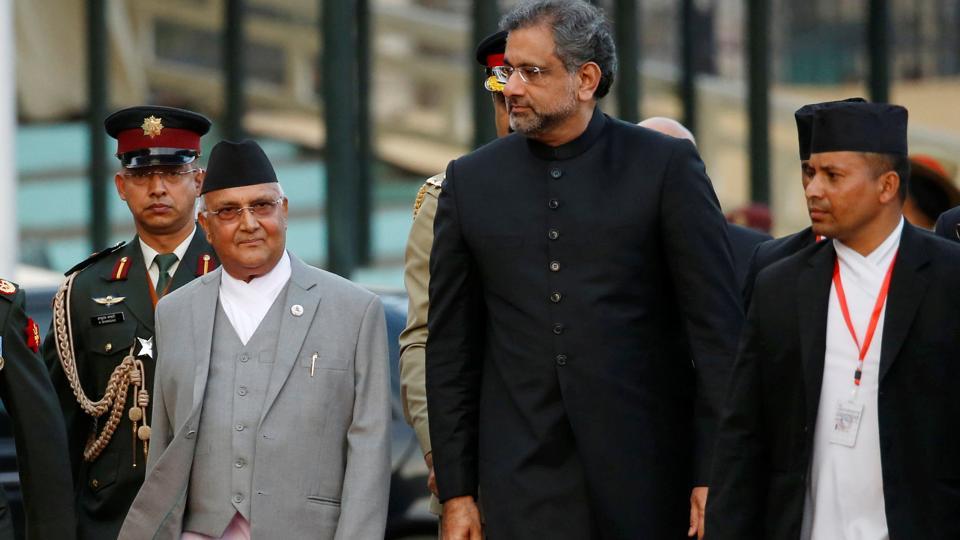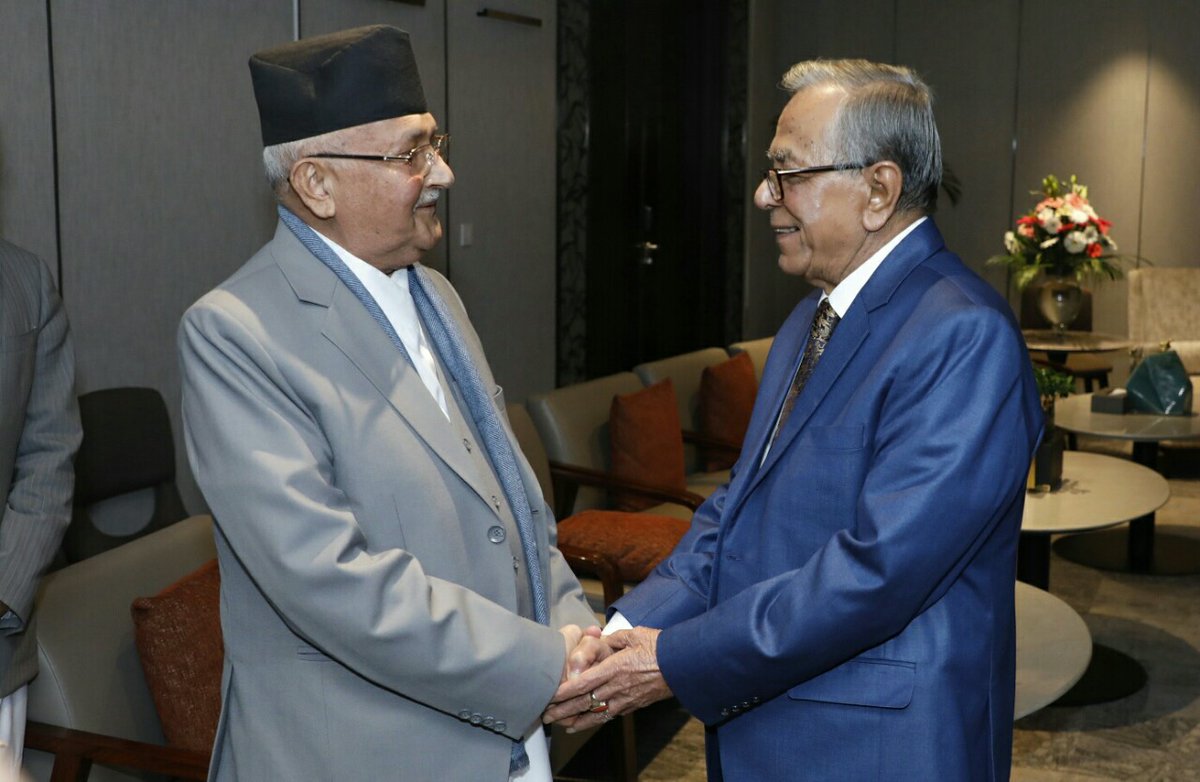APEX Series:
Nepal’s relations with ‘smaller’ powers
1 Pakistan and Bangladesh
2 Bhutan (December 20)
3 Labor importing countries (January 03, 2020)
4 Africa (January 17)
5 The Americas (February 7)
The KP Oli government that swept to power with a two-third majority has made foreign policy diversification one of its main priorities. Its stated goal is to reduce the country’s overreliance on India. This, it reckons, is possible only with greater engagement with China, a superpower in the making and also Nepal’s only other immediate neighbor. But Nepal is also looking farther afield. The government seems as keen to engage the Americans as it does to host Russian President Vladimir Putin. The prime minister has also visited other smaller powers like Cambodia, Vietnam and Switzerland.
In this multipolar world with multiple political and economic systems, diversification is the right strategy to pursue. Yet there also has to be a method to it. Just like we do with big powers, we should engage smaller powers strictly based on our national interest. Closer ties with Cambodia and Vietnam are desirable. But why aren’t we bolstering ties with neighbors like Pakistan, Bangladesh and Bhutan? We should also examine the spreading of our diplomatic wings: can we justify embassies in South Africa and Brazil, for instance?
Our new APEX Series “Nepal’s relations with ‘smaller’ powers” looks to explore our relations with countries other than India, China and the US, the big powers that are constantly on its radar. How should we pursue our relations with labor-importing countries? Or with Africa or the rest of the Americas? In this first article of the series, we discuss Nepal’s relations with Pakistan and Bangladesh, two countries physically close to Nepal but farther than many European and American states in terms of trade and connectivity.
Can Nepal overcome India’s reservations over greater engagement with Pakistan? And why aren’t Nepal and Bangladesh, separated by just 27 km, trading more? Nepalis are constantly expanding their horizons, as is clear by their growing presence across all six inhabited continents. A record number of us are venturing abroad to work, to travel, and to settle down. It is only right that our government embraces the global ambitions of its citizens.
Pakistan: Difficult balancing with India

In his 2004 book Pakistan Islamisation, Army and Foreign Policy, Bidanda M Chengappa, Associate Professor of International Relations at Christ University in Bangalore, writes, “Pakistan’s foreign policy towards Nepal has evolved over the five decades, with India as an important factor in their ties… both the countries attempted to cultivate cordial relations with each other only in order to dilute India’s influence in South Asia.”
As Chengappa elaborates, there have been several instances since the 1960s when India has been an important factor in Nepal-Pakistan ties, and Nepal has always maintained a neutral and cautious approach to Indo-Pak conflicts. The most recent example concerns India’s revocation of the special status of India-administered Kashmir. Nepal initially refrained from issuing any statement. Later, Foreign Minister Pradeep Gyawali made a vague statement calling for resolution of the problem through dialogue. Nepal maintained a neutral position amid pressure from both India and Pakistan to side with them.
Since the establishment of diplomatic ties between Nepal and Pakistan on 19 March 1960, bilateral relations have neither progressed substantially, nor have they faced major setbacks. It was King Madhendra who took the initiative to establish diplomatic ties with Pakistan as part of his broader policy of diversification. In June 1959, Mian Ziauddin, then Pakistani High Commissioner to India, visited Kathmandu and had long discussions with King Mahendra and PM BP Koirala about establishing diplomatic relations. These talks bore fruit a year later.
In the initial phase, the Pakistani High commission to New Delhi was also accredited to oversee Kathmandu. During the Panchayat era, there were some high-level visits between Nepal and Pakistan. King Mahendra paid a visit to Pakistan in 1961 to seek Pakistani support for the Panchayat system, which Islamabad extended. Subsequently, Pakistani President Ayub Khan made an official visit to Nepal in 1963 and spent almost two weeks here.
Pakistan’s approach has always been to support Nepal on issues over which Nepal has difference with India. For example, when King Mahendra imposed the Panchayat system, India expressed its reservations over it whereas Pakistan fully backed it. Similarly, while India objected to King Birendra’s proposal to recognize Nepal as a ‘Zone of Peace’, Pakistani Prime Minister Zulfikar Ali Bhutto welcomed it. Bhutto had said, “We ourselves initiated certain proposals on the same lines and we welcome any proposal by a friendly country and a friendly sovereign like Birendra.”
Nepal, on its part, has always been cautious about its approach to Indo-Pak disputes. During the 1965 Indo-Pak war, Nepal faced a difficult situation. Pakistan complained that Nepali Gurkha soldiers were used against the Pakistan Army. “King Mahendra expressed his inability to intervene in the matter and the Nepalese foreign minister KN Bista even visited Pakistan in the post-conflict phase to personally explain the issue,” writes Chengappa. Similarly, Nepal has persistently maintained a neutral position on Kashmir.
However, there has been little progress on trade, investment and tourism between Nepal and Pakistan. After 1990, leaders of the two countries have met on the sidelines of various regional and global forums, but the frequency of high-level visits has gone down. Pakistani Prime Minister Shahid Khaqan Abbasi visited Nepal on 5-6 March 2018 after almost 15 years; before that Prime Minister Benazir Bhutto had visited Nepal in 1994.
There is some cooperation between the two armies. In May 2018, Nepal Army Chief Rajendra Chhetri called on the prime minister and defense minister of Pakistan, and discussed possible cooperation between the armies. Similarly, the Chairman of Joint Chiefs of Staff Committee of Pakistan Armed Forces General Zubair Mahmood Hayat visited Nepal in June.
The Pakistani government also provides scholarships for Nepali medical students.
Nepal exports black tea, woolen shawls, leather, hides and skins, optical lenses, herbal medicines, lentils and cardamom to Pakistan. Nepal’s imports from Pakistan include refined leather, machinery and parts, shoes and sandals, spices, poppy seeds and medicines. But overall trade is just $5 million. On average, around 3,000 Pakistani tourists visit Nepal every year.
In 1994, Pakistani Prime Minister Benazir Bhutto, on her visit to Nepal, had pledged support for joint ventures in the industrial, agricultural, technical, and technological fields. “We aim to increase our trade, which at present represents only a small fraction of the trade of Nepal and Pakistan with third countries,” she had said. There has been little progress so far.
Bangladesh: Alien a stone’s throw away

When Bangladesh was created after its split with Pakistan in 1971, Nepal was the seventh country to recognize the new Bangla state by establishing diplomatic relations on 8 April 1972. Following this, Pakistan had severed diplomatic relations with Nepal, but reestablished it later.
Five months after Nepal recognized Bangladesh, then Bangladeshi Foreign Minister Abdus Samad Azad came to Kathmandu, and his Nepali counterpart Gyanendra Bahadur Karki visited Dhaka the same year. In 1977, Bangladeshi President Ziaur Rahman came to Nepal, and King Birendra paid a state visit to Bangladesh in 1980. An example of close cooperation between the two countries in this period was the founding of the South Asian Association for Regional Cooperation (SAARC) in Dhaka in 1985. Nepal had strongly backed the formation of this regional grouping.
Soon after its creation, Bangladesh faced a huge food crisis and Nepal provided 15,000 tons of rice to it. In 1976, the two countries signed four memoranda of understanding (MoUs), covering trade, transit, civil aviation, and technical cooperation. They also agreed to collaborate on power generation and water resources. Although possible areas of cooperation were identified, little progress was made in subsequent years.
Nepal-Bangladesh relations have thus been characterized by high-level visits and discussions on potential areas of collaboration. Bilateral ties remain cordial but with little to show for it. Although Nepali and Bangladeshi leaders have met frequently on the margins of regional and multilateral summits, rarely have they made high-level visits to each other’s countries.
Bangladeshi President Abdul Hamid visited Nepal last month after a long gap, but there was no in-depth discussion on bilateral issues. Still, diplomats say, it could herald an era of more high-level visits, which could pave the way for greater engagement between the two countries.
A potential area of cooperation between Nepal and Bangladesh is hydropower. On 10 August 2018, they signed a much-awaited agreement for energy cooperation. Some Bangladeshi companies have shown interest in investing in Nepal’s hydropower. “Bangladesh is keen to buy electricity from Nepal in order to address its power shortage,” says former Nepali Ambassador to Bangladesh, Choplal Bhushal. “There has been some progress as well. We can either use the Indian power grid or construct a separate grid with India’s consent for the purpose.”
However, Sunil KC, Chief Executive of Asian Institute of Diplomacy and International Affairs in Kathmandu, has a different take. “Without signing a Bilateral Investment Promotion and Protect Act (BIPPA), we cannot bring much investment from Bangladesh,” he says.
Bangladesh and Nepal are separated by 27 kilometers of Indian land. Following the opening of Kakarvitta-Phulbari-Banglabandha transit route in 1997, Bangladesh has permitted Nepal to use the port in Mongla. Bangladesh has also provided an additional rail-transit corridor to Nepal via Rohanpur-Singhabad, but this too has not been adequately utilized. “We can fully utilize those transit facilities, which are nearer to us than Chinese ports. And the Bangladeshi government is ready to offer us more facilities,” says Bhushal.
Various studies have also been conducted on the possibility of railway connectivity between the two countries.
There are some hindrances to the import of Nepali products in Bangladesh. While Nepal readily imports Bangladeshi goods such as industrial raw materials, chemicals, fabrics and textile, jute products and electronic items, Bangladesh is blocking most of our products. Still, Nepal exports some amount of yellow lentils, oil cakes, large cardamom, wheat, vegetable seeds, handicrafts and pashminas to Bangladesh. Total bilateral trade today stands at some $10 billion. Given Bangladesh’s huge population, there is undoubtedly much scope to export a lot more to Bangladesh.
Then there are thousands of Nepali students who are studying in Bangladesh, particularly medicine, and the number is rising. Tourism is another potential area of cooperation. Yet the number of Bangladeshi tourists in Nepal has been declining. In January-October period this year, a total of 19,279 Bangladeshi tourists visited Nepal, a 1.9 percent decline from the previous year. Over 29,000 Bangladeshi tourists had visited Nepal in 2017.
As Nepal is preoccupied with big powers like India, China, and the US, the country has made little or no effort to enhance ties with smaller South Asian countries. Lack of homework on exploring areas of cooperation between Nepal and Bangladesh, for example, is a huge missed opportunity.












